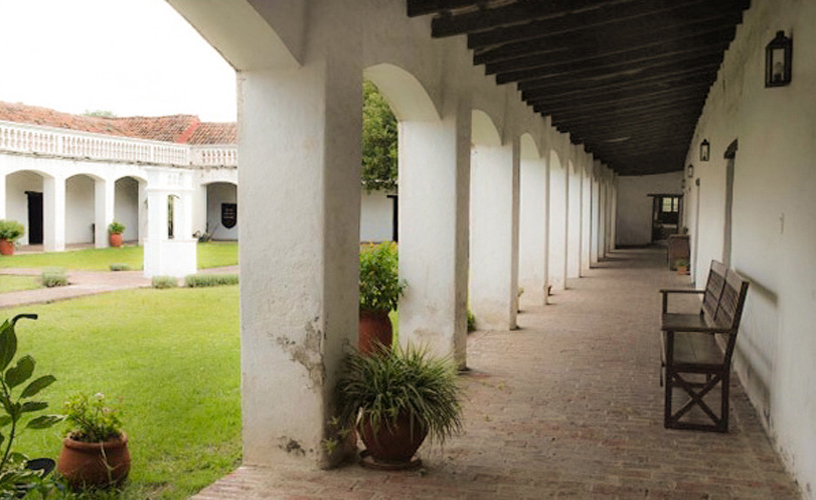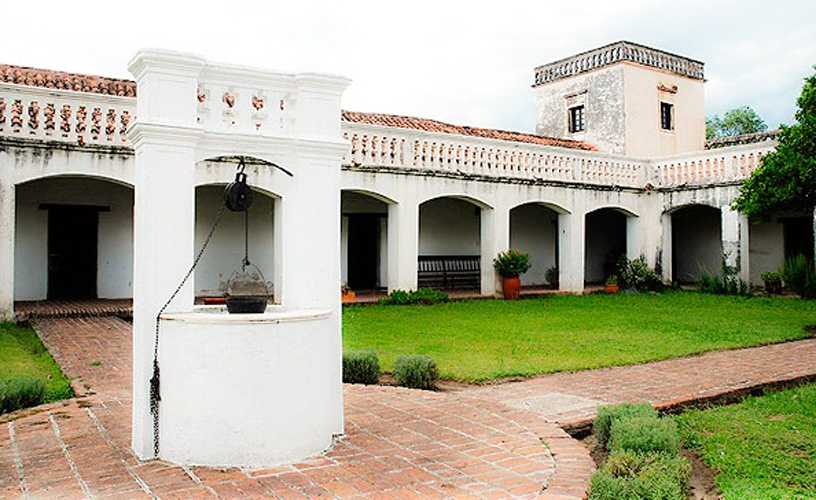First, a summer house
Located on the western boundary of the District of Colonia Caroya, in the Province of Córdoba, 44 kilometers north of the City of Córdoba (National Route 9), this huge colonial grand house is surrounded by tree groves and vines at the foot of the mountain range known as Sierras Chicas.
By 1661, it had been sold to the founder of Monserrat College, Priest Ignacio Duarte Quiróz, who succeeded in transforming it into a prodigious land producing corn and wheat, fruit, wine, honey and carob trees. Later on, in 1867, Duarte donated it to the College so that it would be used as a summer yard by its students. Pupils like Juan José Paso, Nicolás Avellaneda and viceroy Liniers’ children spent their well-deserved holidays there.
Estancia Jesuítica de Caroya
Between 1814 and 1816, the battles of the war for Independence turned Caroya into the first bladed weapon factory in the country. It was a supplier of bayonet spikes for the Northern Army. In 1854, the national government took possession of the venue. In 1876, Nicolás Avellaneda’s administration resolved to shelter Italian immigrants coming from Friuli. In 1878, the new colonists who had already settled down in the estancia quarters began to organize a village very close to the main house.
The Grand House
Consequently, the multi-theme museum and the interpretation center of the estancia managed by the Cultural Heritage Office of the Province of Córdoba become quite significant. The objects and furniture inside the ten rooms that make up the cloisters give testimony of the different periods. Wooden chests, fraileros (armchairs of the Renaissance), Cusqueña paintings and the image of Saint Raymund Nonnatus in polychrome wood were true witnesses to the days of rest spent by the pupils at the Monserrat.
La Estancia de Caroya
The chapel, which dates from the seventeenth century, presents stone walls and only one image of the Virgin of Monserrat at the altar: an invitation to seclusion.
Weapon enthusiasts may go around the halls and the gallery where war items such as 1879 Remington and 1850 Charleville carabines, an 1857 Smith shotgun, as well as sabers and swords from the days of the Revolution, are on display.
Friulian influence is evident in the house bedroom furniture, trunks, spinning wheels and other domestic artifacts. Likewise, a huge barrel with a grape press reveals the produce of Caroya, where the descendants of those immigrants still make the famous Frambua wine.
After years of history, the silence and pleasant corners of Caroya shelter the spirit of each of the Jesuit estancias.
Pablo Etchevers
Gentileza Cba.gov.ar












